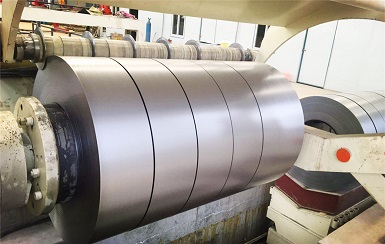HOW DO SLITTING MACHINES WORK IN METAL MANUFACTURING?
2024-02-23

Slitting machines are essential in metal manufacturing processes, as they are used to cut large rolls or coils of metal into narrower strips or coils of specific widths. Here is an overview of how slitting machines work in metal manufacturing:
1. Feed and Unwind: The process begins by feeding a large roll or coil of metal material onto the slitting machine. The material is unwound from the coil and fed through the machine for processing.
2. Shearing: The metal material passes through multiple sets of circular blades or knives, known as slitter knives, which are mounted on arbors. These rotating blades make precise cuts across the width of the material to slit it into narrower strips.
3. Spacer Rings: Spacer rings are used to maintain the desired width of the slit material. These rings help to separate the slitter knives and ensure consistent strip width.
4. Tension Control: Tension control mechanisms are employed to regulate the speed at which the material feeds through the slitting machine. Proper tension control is crucial to prevent wrinkling, stretching, or other defects in the slit material.
5. Recoiling: Once the metal material has been slit into narrower strips, it is rewound into smaller coils using a recoiler unit. The recoiling process ensures that the slit material is neatly wound and ready for further processing or shipment.
6. Edge Trimming: In some cases, edge trimming may be necessary to remove any burrs or irregularities along the edges of the slit material. Edge trimming units can be integrated into the slitting machine to achieve clean, precise edges.
7. Quality Inspection: Throughout the slitting process, quality inspection checks may be conducted to monitor the accuracy of the slit width, the uniformity of the strips, and the overall quality of the finished product.
By utilizing slitting machines in metal manufacturing, manufacturers can efficiently and accurately produce narrow strips of metal material for various applications such as automotive components, construction materials, electrical components, and more.

